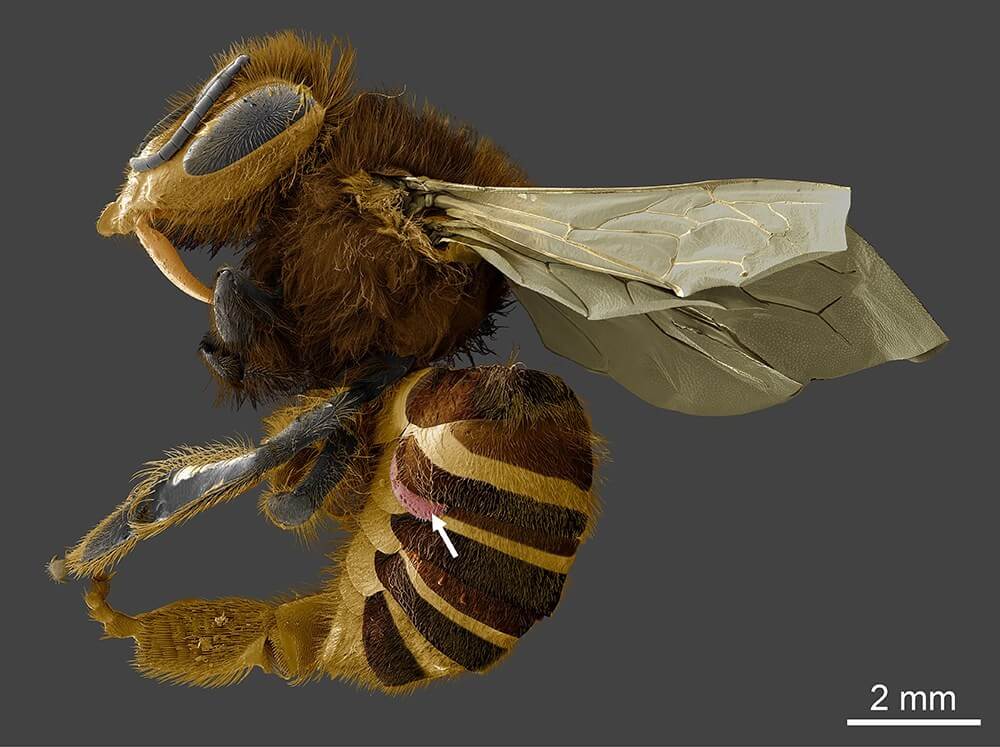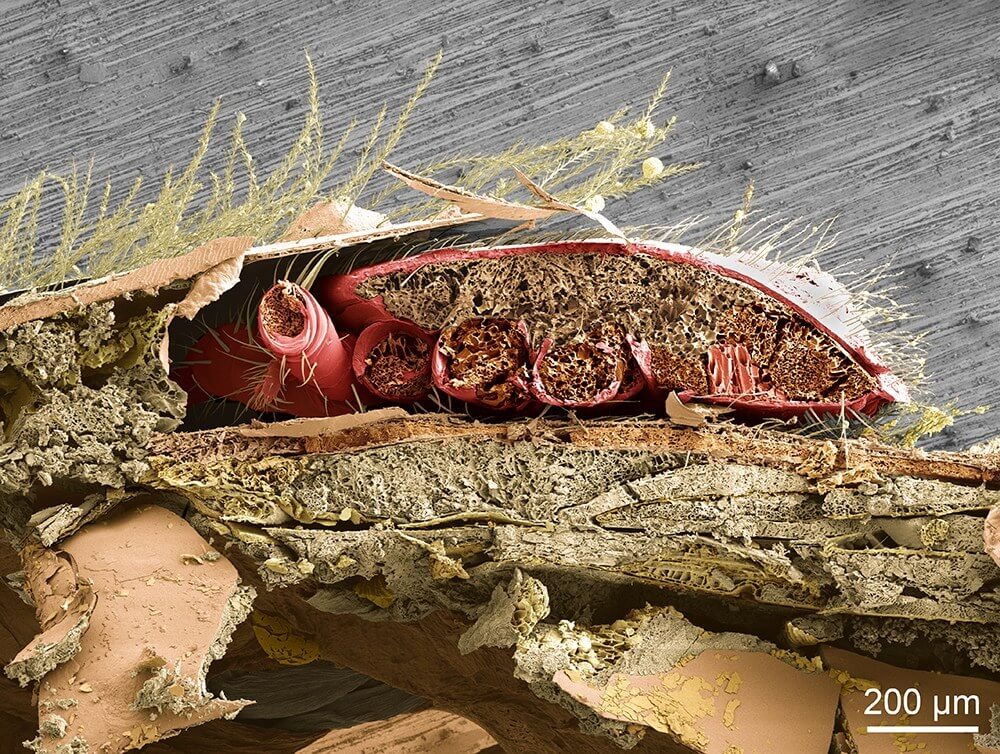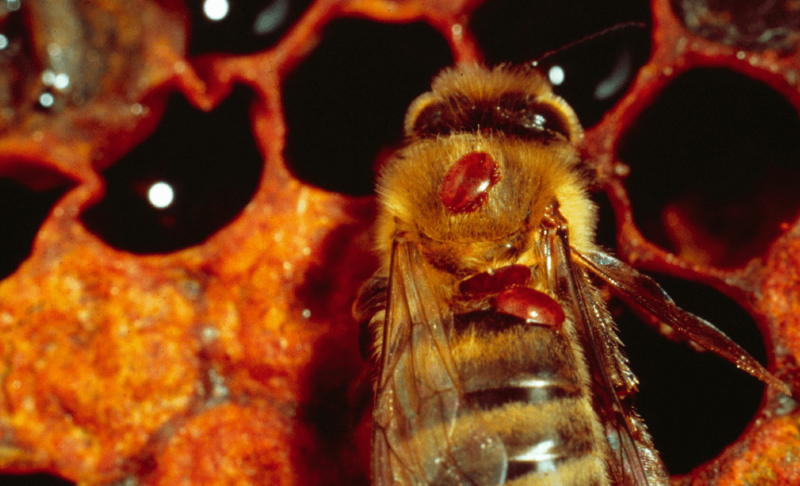Last January, California’s beekeepers were worried they wouldn’t have enough bees to pollinate the almond bloom, their biggest money-making event of the year. Gene Brandi, a California beekeeper and the former president of the American Beekeeping Federation, said winter losses were “as bad or worse than I believe it’s been.”
It turns out he was right. It was another grim year for America’s beekeepers, already reeling from more than a decade of colony losses that threaten the commercial honeybee industry. An annual survey released in June by the Bee Informed Partnership (BIP), a nonprofit collaboration of leading research labs and universities, found that beekeepers lost 38 percent of their colonies last winter, the highest winter figure since the survey began 13 years ago.
Managed honeybees play a crucial role in the nation’s food production, contributing an estimated $15 billion to the U.S. economy each year by helping to pollinate at least 90 crops.
Virtually everyone in the beekeeping business will tell you that the biggest threat facing honeybees isn’t pesticides, starvation, or even the mysterious affliction known as colony collapse disorder that made big news a dozen years ago. Instead, they’ll blame Varroa destructor, a parasitic Asian mite that snuck into the country more than 30 years ago. When asked to cite the three biggest risks to honeybees, Susan Cobey, a renowned expert on bee breeding at Washington State University, says, “Varroa, Varroa, Varroa.”
So far, the primary defense has been mite-killing pesticides known as miticides, but over time Varroa have developed resistance to some of them, and the beekeepers’ arsenal is diminishing quickly. “We think that Varroa are playing an increasing and very large role in these losses,” says Dennis vanEngelsdorp, a University of Maryland researcher working with the BIP. “In part because the products that are used to control them aren’t working as well, and also the viruses that they transmit are becoming more virulent.”
Even as Varroa continue to put enormous pressure on commercial beekeepers, and researchers work to breed bees that can better fight them off, another dangerous mite has been spreading in parts of Asia. If it arrives on our shores, it could push the beekeeping industry over the edge.

A Varroa mite, indicated by the white arrow, nestles between the honeybee’s abdominal segments in this colorized image taken via a low-temperature scanning electron microscope.
Image: USDA-ARS, Electron and Confocal Microscopy Unit, Beltsville, Maryland
Honeybees aren’t native to North America; early colonists brought them over from Europe to provide honey and beeswax. Some of the bees escaped and took up life in the wild, spreading easily, a bit like the dandelions that also came over from Europe. These feral honeybees still live and breed as they did in their homeland and behave much like the 4,000 other species of wild bees living in the U.S. and Canada.
Over the following centuries, additional honeybees made their way over the Atlantic, but that stopped in the early 20th century after bees on the Isle of Wight off the coast of England began dying in epic numbers. Before long, the die-off spread to other parts of Europe. In 1922, in an effort to keep the disease from reaching the U.S., Congress passed the Honeybee Act, shutting the doors to importation of all honeybees.
For more than 60 years, the ban seemed to work, but in 1984 the tracheal mite blamed for the Isle of Wight disease arrived, followed three years later by its more deadly cousin, Varroa destructor. Both mites swept across the country in less than a decade, killing both managed and feral colonies. The honeybees quickly adapted to the tracheal mites, but not to Varroa.
Female Varroa mites lurk in the darkness of a honeybee hive, waiting for the right moment to slip into the wax cells where young bees spend their youth, growing from egg to larva to pupa to adult. As larvae, the bees are ravenous, and their adult sisters, the nurse bees, visit them and provide food more than a thousand times a day. As a larva approaches its next life stage, it sends out a pheromonal signal; the nurse bees know they’ll soon need to put a waxen cap on the cell, so the young bee can complete its metamorphosis.
The problem is that the scent signal also reaches the Varroa mites, who enter the cells and hide under the larval bees’ goopy food, sending up a snorkel so they can breathe. After the cells are capped, a mite will give birth, her daughters will mate with their brothers, and the whole family will have up to two weeks to feed on the unguarded bee.
For decades, scientists thought the mites were like ticks — blood suckers that inject diseases. Research published in January, however, found that the mites actually consume a bee’s “fat body,” tissue that plays a vital role in both its immune system and its ability to detox pesticides.
That discovery opens up new possibilities for developing more effective miticides. Samuel Ramsey, who conducted the fat body research as part of his dissertation in vanEngelsdorp’s lab at the University of Maryland, says, “the holy grail is to add some sort of miticide into the feed of the bees” that could be absorbed in the fat body. But the problem is that the mites can develop miticide resistance, as some already have.
A more promising long-term solution is to develop bees that can fend off Varroa themselves, which is the one of the goals of the U.S. Department of Agriculture (USDA), among others.
“We jumped into Varroa pretty seriously,” says Bob Danka, the research leader at the USDA’s Honey Bee Lab in Baton Rouge, Louisiana, adding that the mite “has really been our focus for 20 years.”
As part of their research, the lab began looking around the world for bees that had developed ways of co-existing with the mites, finding some likely candidates in eastern Russia.
The agency had to get a permit because of the Honeybee Act restrictions, and imported some Russian bees, which they quarantined on an island in the Gulf of Mexico to confirm that the bees were indeed able to prevent Varroa from killing off a colony.
One way bees can deal with Varroa is by taking the caps off larval cells and removing the mites. It seems straight-forward, but not all bees do it. They can also bite mites off of adult bees. These actions are genetic and bees that display these kinds of behaviors — like the Russian ones — are called Varroa-resistant. They are not, however, Varroa-proof and can still be overrun by too many mites.
Eventually, the USDA released the Russian bees to industry, and later they and others brought out more Varroa-resistant lines, none of which have taken hold with most commercial beekeepers, who still choose to use bees that are easily overtaken by mites.
Danka cites several reasons for their reluctance to change. First, many beekeepers believe they already have a workable —if not totally effective — solution for Varroa: a miticide called amitraz. “If amitraz resistance develops, it will be another huge paradigm shift,” Danka warns. “But right now, amitraz works. And if you are a farmer, which is what a beekeeper is, you are risk averse.”
Ultimately, however, “There’s a great fear that the amitraz product is going to fail,” Danka says.

This cross section shows a Varroa mite (red) nestled between a honey bee’s abdominal plates. The mite feeds on a crucial tissue known as the “fat body,” which plays a key role in the bee’s immune system and its ability to detox pesticides.
Image: USDA-ARS, Electron and Confocal Microscopy Unit, Beltsville, Maryland
Second, maintaining Varroa resistance in multiple generations of bees is surprisingly difficult, in large part due to the nature of honeybee sex. Queens mate with 10 to 20 random males they meet while out flying, which means Varroa-resistant genes tend to dissipate quickly unless all those random males happen to be Varroa-resistant too.
Finally, beekeepers are seeking more than just Varroa resistance. They want bees that can make it through the winter with a large population that is ready to spring into action when crops like almonds bloom. They also want bees that are gentle, excellent honey producers, and resistant to pests and diseases other than Varroa.
“In a beekeeper’s mosaic world, it is just one little facet,” Danka says.
Currently, no bee with all those traits is on the market, but a professional group that includes beekeepers, a bee breeder, the USDA, and Project Apis m., a nonprofit that supports honeybee research, is in the third year of trials on a line of bees that may eventually fit the bill.
Given the variety of risks to honeybees, Varroa-resistant bees won’t fix everything. But deploying them as part of a larger strategy to protect colony health is critical, since another parasitic Asian mite, Tropilaelaps, may one day pose an even greater threat.
For a while, researchers thought Tropilaelaps could only survive in the tropics. But now the mites have been found in colder parts of South Korea and the Himalayas. “Nothing is making sense for how they get through the winter yet, but we’re not safe in North America just because of our long winters anymore,” says Jeff Pettis, the former research leader for the USDA’s Bee Research Laboratory in Beltsville, Maryland. “We thought we were, but we’re not.”
Asian beekeepers who deal with both mites worry more about Tropilaelaps than Varroa, and recent research found that amitraz, the current go-to miticide in the U.S., doesn’t work on Tropilaelaps.
“If these mites arrive in the U.S., it will be devastating, like what Varroa mites are doing to the industry,” says Lilia De Guzman, a researcher at the USDA’s Honey Bee Lab in Baton Rouge. She notes that Varroa feed from just one spot on a larva while Tropilaelaps may make multiple wounds: “I’ve never seen that horrific damage on bees infested with Varroa mites.”
For Pettis, the biggest concern is that Varroa-resistant bees won’t necessarily be effective against Tropilaelaps if they somehow make the jump to the U.S.
Meanwhile, some beekeepers aren’t waiting for a well-tested Varroa-resistant bee. They’re trying a Darwinian approach by stopping miticide use. It’s a risky option when your livelihood depends on the bees. Nevertheless, Pettis says, “I’ve heard about a few big commercial beekeepers that have said, ‘I’m treatment free now. I’m taking my losses whatever they are now, it doesn’t matter.’ Because if you’re already losing 30 to 50 percent, it can’t get that much worse.”
Paige Embry is a freelance journalist and the author of “Our Native Bees: North America’s Endangered Pollinators and the Fight to Save Them.” Follow her on Twitter @PaigeAEmbry
This article originally ran at Undark and has been republished here with permission.































